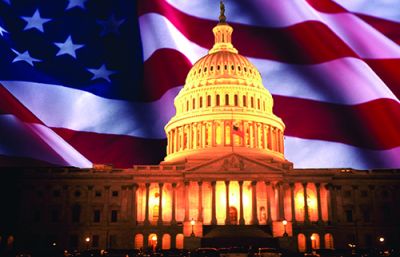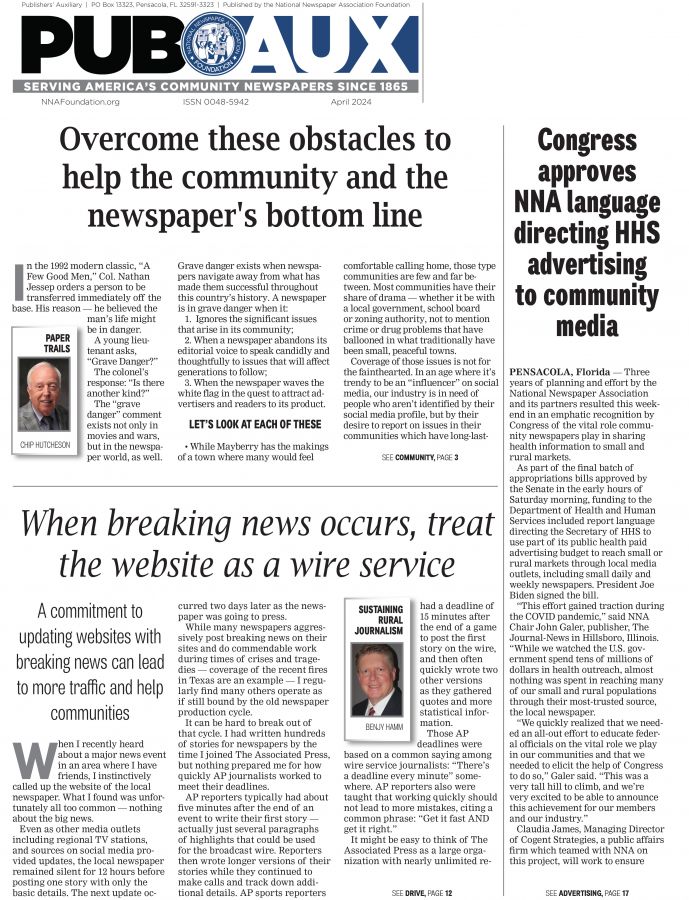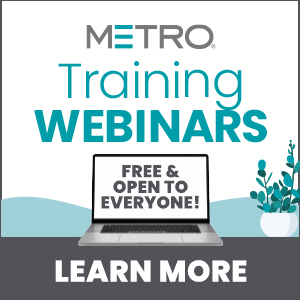Payroll Protection Program – FAQs
Apr 6, 2020

Updated 4/16/20: The Small Business Administration posted that no new applications for the PPP or EIDL loans will be accepted until new funding is approved.
-
What is this program?
A: The PPP program provides forgivable loans to small businesses to assist them in maintaining their workforces through the COVID-19 emergency. It was enacted by Congress as part of the Coronavirus Aid, Relief, and Economic Security Act (CARES Act).
-
Who is eligible for these loans?
A. Most small businesses
· with fewer than 500 employees
· operating with a principal place of residence in the United States
· were in operation on Feb. 15, 2020
· And had employees for whom salaries and benefits were paid or 1099-type independent contractors
· Have not been delinquent on another SBA or federal government loan or defaulted on such a loan over the past 7 years.
B. Independent contractors or self-employed individuals
AND certain other types of businesses, such as 501 (c)(3) non profits. There are also alternative definitions of eligible small business concerns. Consult SBA website www.sba.gov. for those definitions.
C. There are certain exceptions governed by NAIC codes that permit companies with more than 500 employees to be measured by location. These principally apply to the hospitality industry.
-
Do I have to put up collateral?
A. No.
-
Where should a business apply?
A. At any bank or other financial institution authorized to provide Small Business Administration loans. Farm Credit Institutions are eligible to provide these loans as well.
-
When should a business apply?
A. Immediately. Applications will end on June 20, 2020, or whenever the approximately $350 billion in loan guarantees provided by Congress are exhausted. Congress as of this date is considering an extension of the program. NNA has made certain recommendations for this extension. If you would like to see NNA’s recommendations, send a request to Tonda Rush, tonda@nna.org.
-
Is this program first-come, first served?
A. Yes. When the $349 Billion appropriated by Congress runs out, no more loans will be given unless and until more funds are appropriated.
-
Explain again how independent contractors figure in.
A. A newspaper with no employees but only independent contractors may count those contractors only to prove the newspaper is ELIGIBLE for a loan. Newspapers with neither employees nor contractors that are sole proprietorships may also be eligible. But the newspaper does not count payments to these contractors as payroll for purposes of calculating how much the loan can be.
-
How much may I borrow?
A. You are allowed to borrow up to 2.5 times your average monthly payroll, calculated as either 12 months previous to your application or for all of 2019. The maximum loan is $10 million. Count all of your payroll plus benefits, health insurance and retirement benefits and state and local taxes that are calculated with respect to employee compensation. According to Treasury Department’s rules, you may not count the employer’s side of the payroll tax. Do NOT count federal FICA tax withholding from Feb 15 to June 30, 2020.
You must calculate your average monthly payroll costs and then multiply times 2.5. (Again, DO NOT include independent contractor costs in this calculation. Those contractors are considered independent businesses and must apply on their own.) Most SBA lenders will have an application form to use to help you calculate this amount.
-
Is this loan forgivable?
A. Yes, provided you use the funds for the acceptable purposes. Payroll and benefits must constitute 75% of the disbursements, according to a rule set up by the Treasury Department and Small Business Administration. Other acceptable purposes are rent, mortgage interest, utilities. Printing and production costs are NOT an acceptable purpose. NNA has asked Congress to permit these expenditures in the future. Note that the forgiveness is not automatic. When you receive your loan, ask your lender for the application for forgiveness.
-
Who proves that the money was spent for acceptable purposes?
A. You, the borrower, must do that. You may be asked to produce canceled checks, payroll reports, utility bills, etc. Some businesses are putting their PPP loan money into a separate account to make it easier to track expenditures, although the law does not require you to do that. Any part of the loan that you did not use for these purposes must be repaid.
-
What is the interest rate?
A. The federal government is setting the interest rate at 1%.
-
How long can this loan run?
A. Up to 2 years.
-
What will the bank ask you to show at the front end of the loan?
A. You will be required to show calculations about your payroll and other costs, and certify that because of the public health emergency, you are uncertain about your business’s future. You must certify that you intend to use the proceeds for the approved purposes. More extensive certification will be needed for the forgiveness phase.
-
When should I spend the money?
A. The money must be used in the 8-week period following your receipt of the loan disbursement. Your first expenditure must be within 10 days after you receive your loan money, according to the Treasury Department’s guidance published April 8, 2020.
-
When must I begin repayment?
A. Payments begin six months after you receive the funds. Interest will accrue during those six months. But some or all of this loan may be forgiven. You may still have to pay some of the loan back if 1) you used some of it for non-acceptable purposes; or 2) you had a workforce reduction that you were not able to restore. See 18. Below.
-
May I apply for more than one loan?
A. No. SBA has determined that you may received only one loan. So you should apply for the maximum amount you expect to need. But NNA has asked Congress to make businesses eligible for more than one application.
-
How will loan forgiveness work?
A. SBA and the Treasury Department are still issuing guidance on the forgiveness process. Stay in touch with your lender and watch for NNA guidance as we know more. One thing is clear: you must keep your documentation so you can apply for the forgiveness.
-
What if things don’t work out as I planned and I am unable to use 75% of the funds for payroll?
A. If you furloughed or laid off any employees after Feb. 15, you will have until June 30 to restore full payroll. If you cannot maintain full payroll for the next six months, a portion of your loan may not be forgiven and you will have to pay all or part back. For example, if you had 10 employees in 2019 and laid off one on Feb. 16 and cannot rehire someone to restore your workforce complement, your payroll forgiveness will be for only 90% of the payroll portion of your loan. It is not yet clear how measurement of a fully-restored payroll will work, but experts believe the definition of a full-time employee will be someone who worked more than 30 hours a week during the measurement period—a definition that is in the Affordable Care Act. Again, more guidance is expected from Treasury on this point.
-
Will the forgiven loan be taxable as income to my business?
A. No. But it is unclear whether payroll expenses that are supported by the forgiven loan can be counted as business expenses in your 2020 tax liability. Again, more information should be coming from Treasury on this point.
-
Does the bank make money on these loans?
A. SBA is paying processing fees to banks of 5% for loans under $350,000; 3% for loans between $350,000 and $2 Million and 1 percent for loans in excess of $2 million.
-
Are there other SBA loan programs available?
A. Yes, the Economic Injury Disaster Loan (EIDL) is available. This is the first time in history that emergency conditions exist in every state. SBA is charged with providing the first $10,000 of these loans as a grant to businesses that apply for these loans. The grant money may be kept even if the loan is later not approved. The interest rate for these loans is 3.5%. One caution: the EIDL loans and PPP loans may not be used for the same purposes. So if, for example, your business gets a PPP loan to cover payroll, the EIDL loan must be used for other expenses. These loans are given directly by SBA, not by the banks, which is supposed to respond to applications within 3 business days. But it is a small agency and the applications have been voluminous. Responses likely will be slower than usual.
-
What is NNA doing to help?
A. NNA continues to work with committees in Congress to provide information about the urgent need of community newspapers for forgivable loans and grants. NNA also is asking Congress to extend this program, allow businesses to apply for more than one loan and not to begin counting the disbursement period until after shutdowns end. But Congress has not yet acted on clarifications of the PPP or other provisions of the CARES Act. Until new laws are passed, the existing restrictions and mandates must be followed.
-
What if I have concerns about how the PPP program is administered or the way Congress developed the criteria?
A. Send an email to Tonda Rush, tonda@nna.org. NNA members only, please. NNA will continue to provide feedback to the federal agencies and to Congress as this program continues to unfold.









